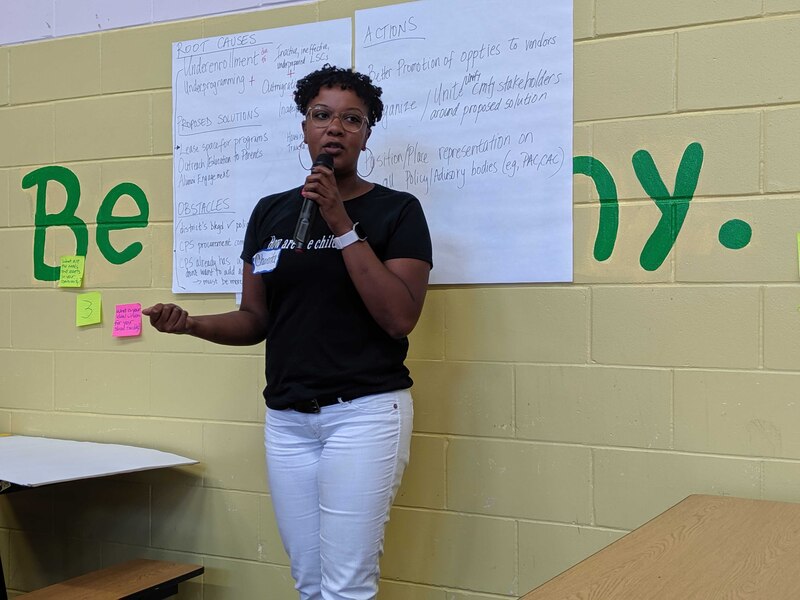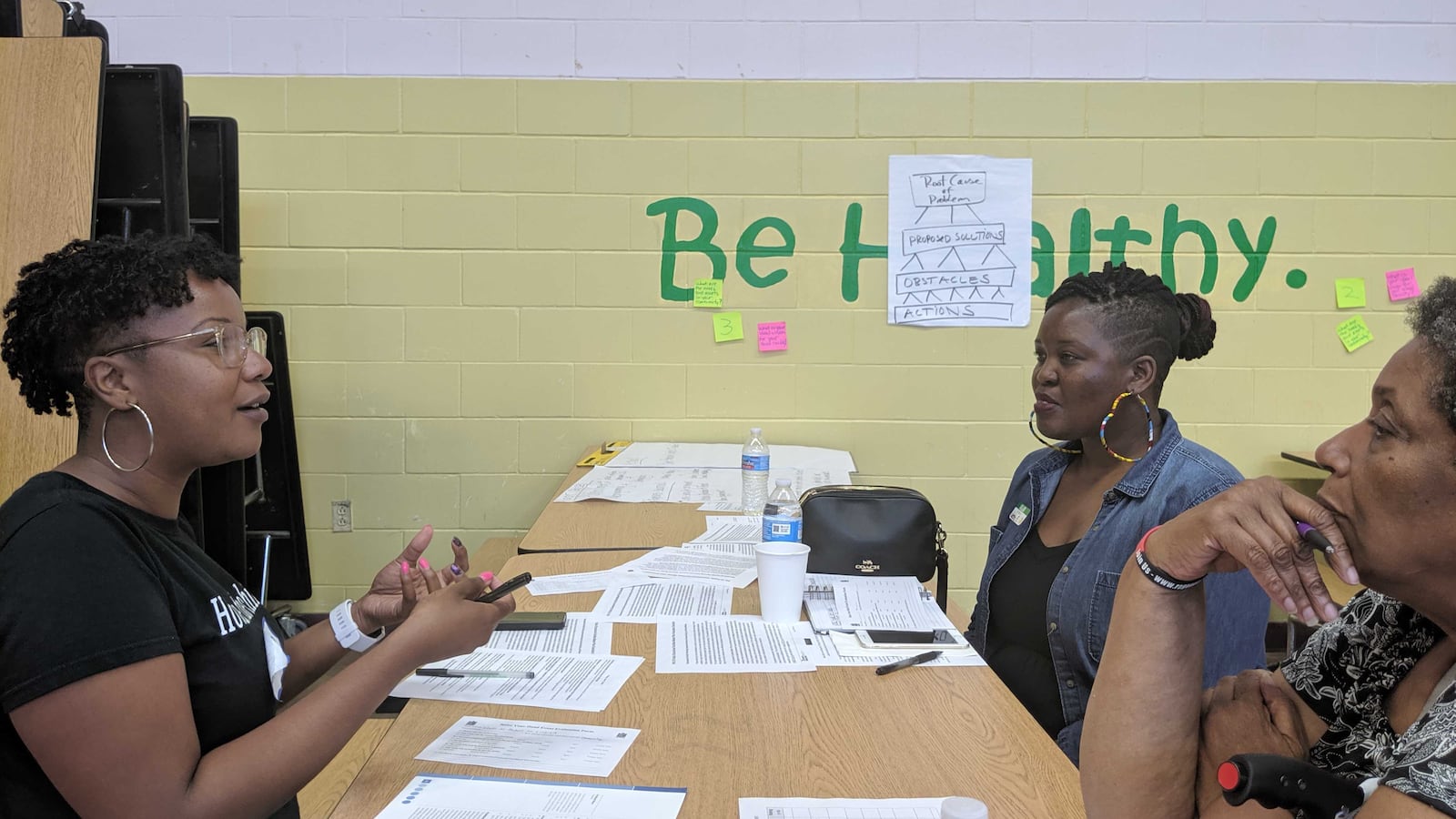In a district with more than 200 under-enrolled schools, what options do parents and community leaders have besides school closings?
Charging that there is a lack of clear policy direction from City Hall and Chicago Public Schools on the topic, a pair of parent advocacy groups set up a two-day workshop on the West Side to help educate community members on their options — from sharing vacant space with other schools or community groups to lobbying the district for different attendance boundaries or coming up with plans to boost enrollment.
Related: Lessons from a Chicago school merger: Race, resilience, and an end-of-the-year resignation
The information was welcome to community organizer Chanita Jones-Howard, a teacher at South Shore International College Preparatory High School who furiously scribbled notes during presentations and brainstormed solutions with other attendees in small group discussions.
She said she feared future school closings could target shrinking neighborhood high schools in the Great Stony Island area, which includes predominantly black communities, such as South Shore, Greater Grand Crossing, Auburn Gresham, and dwindling high schools such as Emil G. Hirsch Metropolitan High School and Harlan Community Academy High School. She wondered whether the school district or city has a long-term vision for neighborhood schools wrestling with shrinking enrollment and disrepair.
“Is there a plan for us specifically? No,” said Chanita Jones-Howard. “Not one that they have shared with us.”
The education advocacy groups, Blocks Together and Raise Your Hand, hosted the event at Beidler Elementary School on the West Side Friday and Saturday, with a focus on mobilizing grassroots efforts on the topic of school facilities planning.
This do-it-yourself approach comes as Chicago Public Schools faces down an April 2021 deadline to update its 10-year facilities master plan. The requirement, born out of a state law aimed at increasing transparency around the district’s investments in school buildings, is updated periodically and mandates community input. The district also faces the need to comply with a 2018 state law requiring it to explore alternatives to closing under-enrolled schools and work with those school communities on potential interventions. Chicago is also playing catch up on state requirements that mandate district-wide architectural needs assessments of school buildings.
Meanwhile, the state of Illinois has tagged nearly 40 Chicago campuses for improvements as part of a $45 billion infrastructure bill that includes money for schools.
Related: CPS $1 billion capital budget hearings: Questions, demands, and mixed feelings
Cecile Carroll-De Mello, the co-director of Blocks Together, said amid leadership changes at City Hall, in the statehouse, and on the school board, there is an opening for community members to lead the conversation around improvements at their neighborhood schools.
“People have cried out for more authentic engagement in the planning process, doing things in a way that really incorporates the stakeholders but also is backed with appropriate data,” Carroll-De Mello said.
Chicago schools chief Janice Jackson, now in her second year on the job, has stressed giving communities data about programs and resources in their neighborhood schools, and providing opportunities for them to apply for high-demand academic programs, such as International Baccalaureate, fine arts, and dual language. Her administration has also provided “equity grants” to offset budget cuts at under-enrolled schools.
But under Chicago’s largely per-pupil approach to funding schools, many small schools still have limited resources to attract more students, and only one out of three applicants received a grant for a new program that could help them attract more students.
Under-enrollment is hardly the only facilities challenge facing Chicago schools. Many campuses suffer from physical problems, such as faulty boilers, leaky roofs, and crumbling masonry. Other schools experience overcrowding and need additions or new buildings.
Related: The tension between Chicago enrollment declines and new schools

After presentations from experts on school facility planning and education policy, those gathered Friday broke into small groups to discuss specific problems at their neighborhood schools, including inadequate facility funding, a lack of upkeep, and overcrowding.
But under-enrollment dominated many of these conversations, especially for South and West side school advocates whose campuses are losing population, including Austin College & Career Academy and Tilden Career Community Academy High School in Fuller Park.
“The fundamental message is: if you develop a plan, and you represent it to the district and you push for it, then it’s possible for it to come to fruition,” said DePaul University professor Alexios Rosario-Moore, who presented at the event.
Related: Chicago schools look beyond closures to tackle declining student population
Participants discussed solutions, such as rebranding campaigns tackling stigmas that turn students away from neighborhood schools, lobbying to install high-demand programs in their schools, getting creative with the use of school facilities, transforming schools into community hubs that offer job training and GED classes for adults, attracting families back to neighborhoods with affordable housing, and revising the district’s building space-use formula that determines whether or not schools are underutilized.
The groups brought in a Washington, D.C.-based consultant, Mary Filardo, executive director of the 21st Century School Fund. She urged attendees to see themselves as on-the-ground experts informing Chicago Public Schools’ long-term decision-making and lighten district leaders’ load as they tackle a myriad of related and unrelated problems.
“Chicago Public Schools cannot hire its way to the type of creative power that’s in this room,” she said. “The creativity for problem solving is going to come from the people. The [district] actually needs the community to be paying attention to the long-term.”

